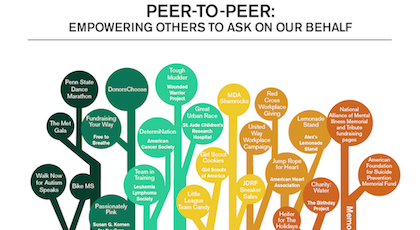It is notoriously difficult to fulfill your Kickstarter on time. According to CNN Business, 84% of Kickstarter projects shipped late in 2012. This is a staggeringly high percentage of Kickstarter campaigns that have fulfilled late, and it all leads us to one natural conclusion. Kickstarter creators do not understand supply chain management. Often, this leads them to naively make promises they cannot keep.
My name is Brandon Rollins. I write about board game development on my blog, Brandon the Game Dev. Today, I am writing on behalf of Fulfillrite, a company dedicated to helping you ship your products on time. Together, we have identified five bottlenecks that often slow down the Kickstarter fulfillment process. By helping you to understand common pitfalls, it is our hope that we can help you to fulfill your Kickstarter on time!
Need help fulfilling orders for your Kickstarter campaign? Fulfillrite can help. Request your quote today!

Bottleneck #1: Sending poor specifications to the manufacturer.
Most Kickstarter creators are savvy enough to request quotes from one or more manufacturers before launching a Kickstarter campaign. This is enough to give them an idea of how much money to raise, how long the products will take to make, and what is and isn’t being made. What a lot of creators fail to do, however, is create specifications that are immediately ready for manufacturer use. What’s more, they don’t account for the time needed to prepare the specs for manufacturing, leading to a delay before the products are even created!

This is a little abstract, so I’ll use an example in an area I know well – board games. When you’re getting ready to print a board game, files need to be made to exacting standards to make sure they print correctly. You don’t just have to prepare imagery for printed areas, but for the “bleed” as well. Sometimes games print a millimeter or two off, and you don’t want there to be blank white space showing up on your game. If you don’t include imagery for the bleed area – and many people forget to do this – the printer will often tell you to redo all your games’ files.
It gets harder, still. Colors on digital screens use red, green, and blue lights. Printers, however, use cyan, magenta, yellow, and black to make colors. The former is called RGB and the latter is called CMYK. If you send RGB files to a printer who needs CMYK files, the good ones will tell you to redo everything. (The bad ones will print the suboptimal colors anyway!)
I’m leaving out a lot of details here, but the message is clear: creating a product – even something as simple as a board game – is really technical. If you want to fulfill your Kickstarter on time, you need to make sure your specs and your files are turn-key for your manufacturer. Otherwise, you run into a delay right off the bat. While this isn’t technically a fulfillment delay, your backers can’t tell the difference.
Bottleneck #2: The manufacturer delivers late.
Another potential bottleneck for fulfilling Kickstarter campaigns on time is how the manufacturer handles your order. It is possible to create specs and files that are absolutely perfect and still run into delays. After all, unless you are creating your own products by hand, this is a potential risk for you.

What can you do about manufacturer delays? Honestly, not much once you commit to a manufacturer. There are two actions you can take ahead of time to reduce the risks, though:
- Do your research on the manufacturer before you commit. Dig around for testimonials. Call up their old clients and see how their experiences went. You can’t always trust online reviews, especially for obscure shops overseas to whom a lot of Kickstarter creators outsource work.
- Build in a buffer period into your manufacturing estimate. Even after all the due diligence in the world, you could still run into this issue. If your manufacturer estimates it will take four weeks to create your rewards, write down six weeks on your campaign page. Underpromise and overdeliver!
Bottleneck #3: Mishandling freight forwarding.
Even if your specs are perfect and your manufacturer keeps their promises, you still have a lot of work to do! Odds are, you’ve had your products made overseas. Let’s assume China because that’s a really common place to outsource manufacturing to. Let’s also assume you are using Fulfillrite’s warehousing and order fulfillment services. You have to move a large shipment of products from China to New Jersey, USA, where Fulfillrite is located.

As you probably guessed from the headline, moving large shipments across the world involves freight forwarding. Sometimes your manufacturer will take care of all this for you, especially if you and the manufacturer agree to DDP terms. DDP stands for delivery duty paid, meaning the manufacturer handles the entire process of shipping goods to you. This is not terribly common, though, and you’re more likely to work on EXW (Ex Works) or FOB (Free On Board) terms. What this means is that you have to arrange somebody to pick up the goods and ship them to your warehouse. Freight forwarding services handle these responsibilities.
If you do not have somebody taking care of freight forwarding, the goods could sit on the manufacturer’s dock waiting to be picked up indefinitely. Miscommunications at this stage can cause all sorts of delays. To avoid these problems entirely, I advise you to contact a freight forwarding service, such as Fulfillrite’s industry partner, Shapiro, well in advance.
Bottleneck #4: Hijinks with customs and regulations.
Any time you send a good to a foreign country, it has to clear customs. The purpose of customs is twofold: to levy taxes on goods imported into a country and to make sure goods comply with applicable laws. Both of these purposes can be troublesome to inexperienced Kickstarter creators.

Let’s start with taxes first. Most of the time, when you import goods over a certain value into a country, you have to pay tariffs. Oftentimes, the very same people who are coordinating your shipments – the freight forwarders – will take care of that and you pay them back. If you are trying to coordinate shipments without assistance, you may have trouble paying the bill – or even knowing there is a bill to pay. Your goods would then not be released until the customs bill is paid.
It’s not just about money, though. Safety is a big issue, too, and customs agents actively work to keep us safe. Using board games as an example, did you know that in order to import children’s board games into the European Union, you have to comply with regulations EN-71-1, -2, and -3? These are child safety regulations and if your board game is intended for children under the age of 14, you need to have certified safety testing completed before you can import the games into the EU. Failure to do so could lead to games being held up in customs for, honestly, there’s no telling how long. It depends on the country and the specific regulations violated.
If you want to avoid problems with customs, you need to do three things. First, make sure you have somebody taking care of the shipments on your behalf, such as a freight forwarder. Next, ensure you have money to pay the freight forwarder who paid the customs. Last, research and comply with all regulations and laws associated with the type of product you are making. Do this well before your campaign launches to avoid future problems.
Bottleneck #5: Slow fulfillment by the warehouse.
Once your products clear customs, most of the major issues have already been eliminated. Assuming you are using a good freight forwarding service, your products will then be shipped to a warehouse of your choice where the orders can be fulfilled. As long as you send the warehouse a list of orders and your products have necessary elements such as bar codes, it should be pretty easy to ship from there.

Still, fulfillment companies can cause delays, too, especially around holidays. You need to research fulfillment companies in the same way that you do manufacturers. You want to make sure that they are able to deliver on time and to the correct people.
Fulfillrite is one such provider of fulfillment services. One way they avoid massive delays is by specializing in very specific kinds of products, particularly small items. This, among other unique business processes, allows them to ship on time even during the holidays. You should still perform thorough research around your campaign’s specific needs, but Fulfillrite is definitely worth a close look.
Final Thoughts: Fulfill Your Kickstarter On Time
To fulfill your Kickstarter on time may seem like an incredibly complicated undertaking. In truth, it is. However, by examining all the ways where projects fall apart, we can help you avoid those pitfalls. Commit to educating yourself on the supply chain process long before you launch a Kickstarter campaign. You’ll be glad you did.
For now, remember these five tips:
- Make sure your specs are ready to go as soon as you fund.
- Pick a great manufacturer.
- Take advantage of freight forwarding services.
- Research and comply with international laws and taxes.
- Choose a great fulfillment warehouse.
Good luck on your Kickstarter campaign!
Need help fulfilling orders for your Kickstarter campaign? Fulfillrite can help. Request your quote today!




